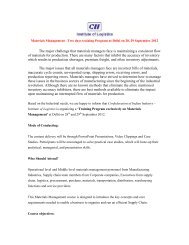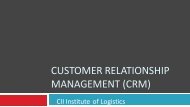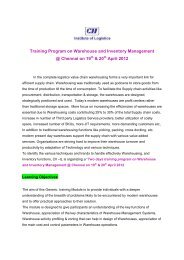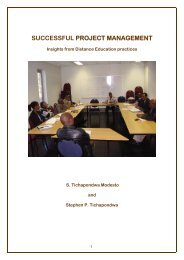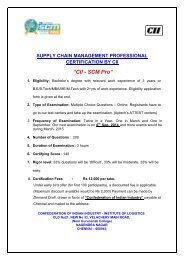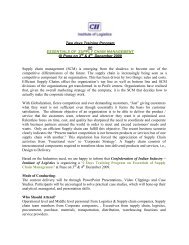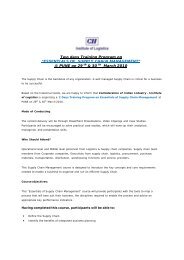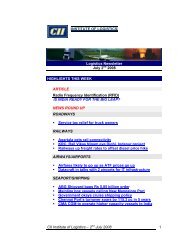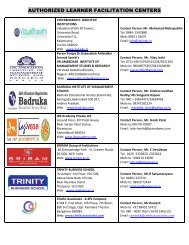Total Quality Management - CII Institute of Logistics
Total Quality Management - CII Institute of Logistics
Total Quality Management - CII Institute of Logistics
Create successful ePaper yourself
Turn your PDF publications into a flip-book with our unique Google optimized e-Paper software.
<strong>Total</strong> <strong>Quality</strong> <strong>Management</strong><br />
This chart makes use <strong>of</strong> a five-piece sample each hour. After the five measurements are<br />
recorded, they are added together and this total is recorded in the "sum" line. Next, figure<br />
the average <strong>of</strong> the five measurements by dividing the total, or sum, <strong>of</strong> the measurements<br />
by the number <strong>of</strong> parts measured (five, in this case) and enters it in the "average" line.<br />
The average is plotted as one point on the chart.<br />
Another point to be plotted on the chart is the range. We find the range (or R, as it is<br />
called) by subtracting the smallest <strong>of</strong> the five readings from the largest <strong>of</strong> the readings.<br />
This number is recorded on the "range" line <strong>of</strong> the chart and plotted as one point on the<br />
range chart.<br />
As you can see, the average and range chart actually consists <strong>of</strong> two charts. We use the<br />
average to monitor how well the operation is centered on the specified dimension, and we<br />
use the range to monitor the spread <strong>of</strong> the dimension around the average.<br />
You can see lines on the chart that are marked UCL and LCL. These letters stand for<br />
upper control limit and lower control limit. The upper control limit (UCL) and the lower<br />
control limit (LCL) are the limits within which we expect the plotted points to stay. If a<br />
point falls outside one <strong>of</strong> these limits, the job is said to be "out <strong>of</strong> control".<br />
In our example we can see that an average point fell outside the upper control limit at<br />
11:00. This is a signal that something was distorting the normal distribution <strong>of</strong> the<br />
diameter <strong>of</strong> the bushing. A grinding wheel adjustment was made, and the job was back in<br />
control again.<br />
<strong>CII</strong> <strong>Institute</strong> <strong>of</strong> <strong>Logistics</strong> 83<br />
Website: www.ciilogistics.com







